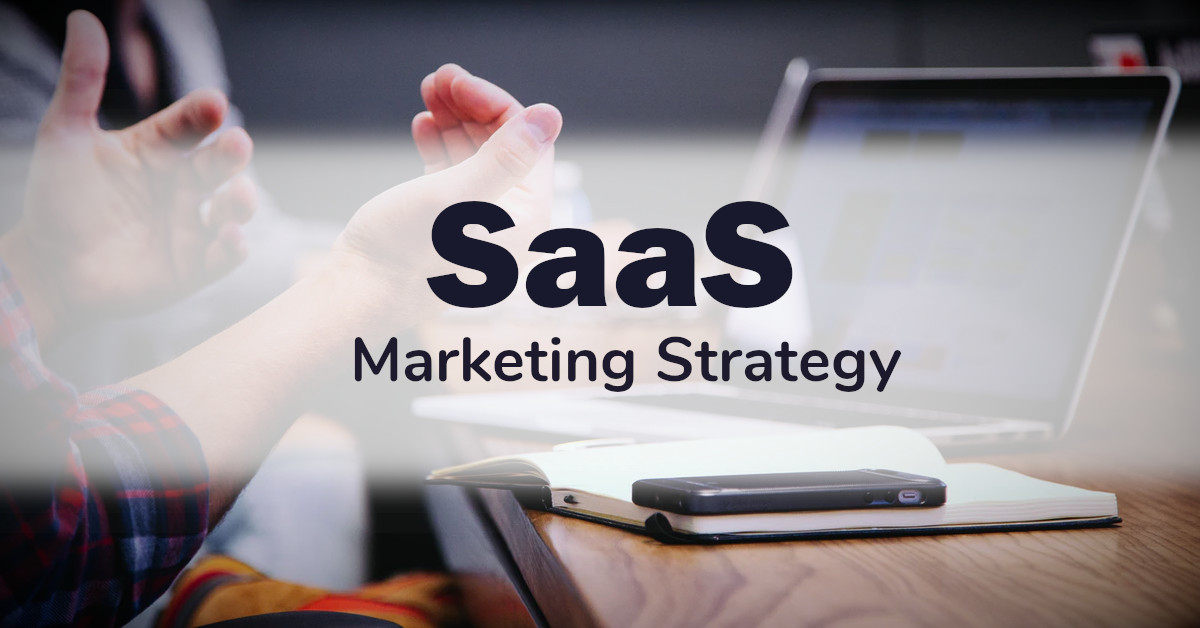An optimal SaaS marketing strategy should focus on customer acquisition. Normally a free trial is offered as a lead magnet and users then convert to paid users on a monthly subscription. SaaS platforms scale well and can grow quickly when they find product market fit and get customer acquisition costs below lifetime revenues.
Contents
- 7 Saas Marketing Tips [Video]
- SaaS Marketing Metrics
- Marketing Channels For SaaS
- SaaS Marketing Funnels
- SaaS Pricing Theory
- Marketing Automation For SaaS
- SaaS Marketing Tips
7 SaaS Marketing Tips

Introduction: SaaS Marketing Metrics & Definitions
Software as a Service (SaaS) companies provide value through software such as a web platform and charge a monthly fee for use of the service. Some examples of SaaS platforms include:
Any article on SaaS marketing is going to read like a foreign language if you aren’t up to speed with all the acronyms. Let’s run through a few and see how they come together in a SaaS environment.
| Abb. | Term | Description |
|---|---|---|
| MRR | Monthly recurring revenue | Total customer revenues which rebill monthly. The first stat every VC will want to know and a KPI on every dashboard. It also has knock-on stats like MRR Expansion Rate. ARR (Annual recurring revenue) can be used for SaaS platforms that charge annually. |
| CLV LTV | Customer lifetime value | Average amount each customer spends in total in their lifetime. Hard to predict in the first three years. |
| CCR Churn | Customer churn rate | Percentage of customers who cancel or don’t renew their subscription. |
| CAC | Customer acquisition costs | The cost of acquiring a single customer. |
| ACL | Average customer life | Total number of days between customer acquisition and the customer leaving. |
| ACP | Average customer pricing | MRR divided by number of customers to get the average customer monthly spend. |
| NPS | Net promoter score | Calculate NPS by subtracting the percentage of customers who rate your platform <= 6 (detractors) from the percentage of customers who answer with >= 9 (promoters) |
Marketing Channels For SaaS
Driving traffic to a SaaS platform isn’t too different to performance marketing in any other field.
In an ideal world potential customers are already searching for solutions to the problem that your SaaS platform solves. If that’s the case then Google search ads can be used to get a lead magnet or free trial landing page in front of those customers.
If potential custoers aren’t googling for solutions to the problem it might be a good time to ask why. Most SaaS platforms fail because there’s no demand for the service and most founders only find this out after they’ve spent 3 months building a platform.
However if it is something revolutionary that customers just don’t realize they need yet but will as soon as they hear about it then disruptive marketing is the other option. Facebook ads platform provides massive social media exposure and targeting options. Other social ad platforms such as Twitter and Linkedin might be more suitable if that’s where your customers spend their time.
I wouldn’t recommend SEO or free organic traffic as a key marketing channel for new SaaS platforms. SEO traffic takes time to build which will even further widen the gap between promotional costs and revenue generation. A simple blog with a strong content strategy and some retargeting ads will be cost effective in time & resources during the early stages.

SaaS Marketing Funnels
SaaS marketing funnels differ between business to customer B2C and business to business B2B services. Here are some simple examples.

From first interaction to a customer upgrading to a paid membership this funnel may only take less than a week. In comparison a high ticket value B2B sales funnel might take 6 months but the rewards are that much greater per customer.
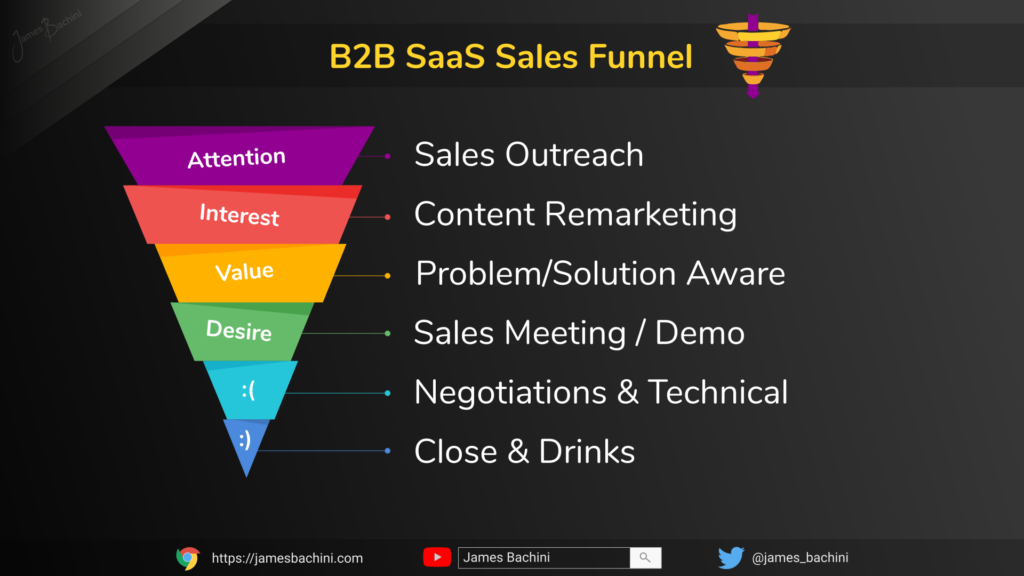
There’s some core principles behind these and every sales funnel. Let’s use the popular AIDA framework to see how this relates in SaaS context.
The first step is to capture attention. Without attention it doesn’t matter how good your product is as no one will ever know what they are missing. Capturing attention requires getting your brand in front of potential customers. Paid advertising, media attention and growth hacking are primarily ways to capture an initial audience.
The second stage is arouse curiosity and generate interest. Lead capture landing pages work well when linked up to a good email autoresponder and retargeting campaign.
The visitor will provide an email in return for a free trial or pdf download. Then they’ll get staged emails providing value to the reader while also making the customer problem and solution aware. Retargeting ads can supercharge this strategy to make your content “appear everywhere“.
The third stage is creating desire for the service. By this point the user should be familiar with the problem and how your solution works. Demo’s and free trials can provide the necessary product familiarity for the customer to visualize themselves using the SaaS.
The final stage is a call to action. When the free trial runs out the client will have to make a choice to leave or upgrade to a paid membership. In a B2B setting the call to action is the final negotiations and close. Conversion rate here is critical as it’s an all or nothing situation the majority of the time.
Here is some further reading on AIDA and other frameworks and funnels.
SaaS Pricing Theory
You’ve probably noticed that most SaaS platforms use a tiered freemium type model. It’s been split-tested and it works.
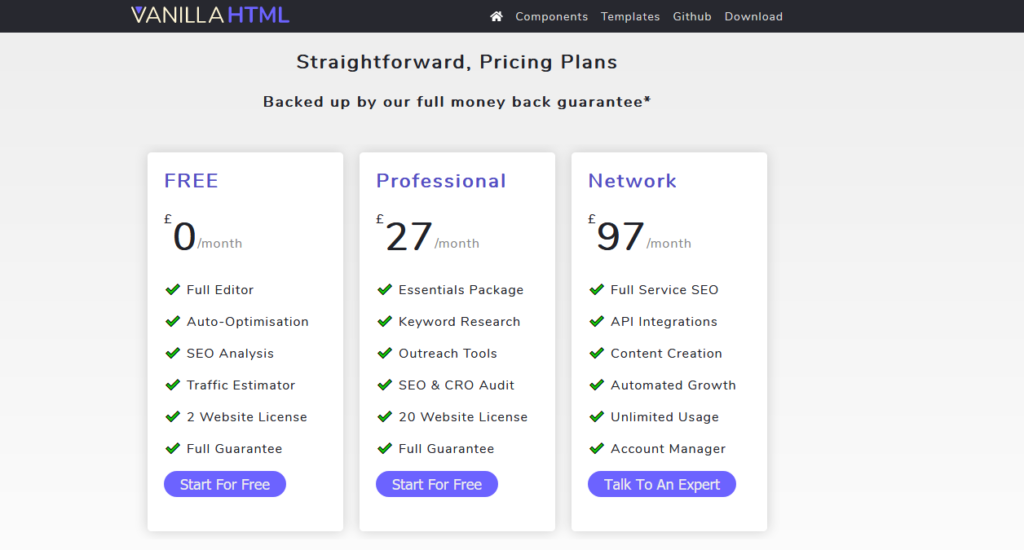
The only exception to this is B2B SaaS platforms that appeal to entire corporations. In this case a cost per user model works well to make it affordable to all sizes of businesses.
The freemium model can be executed in two ways. Either a limited time free trial or a basic account with enough limitations to encourage an upgrade.
Free trials generally last 7 – 30 days. If the platform is something that becomes more useful the more a user understands and uses it then go for a one month trial. If it’s in a niche that a user might lose interest in or be compulsive about then a quick trial will perform better.
The price point for each tier should be dynamic and it’s a key thing to split test from the start. It’s going to be a bad situation if you find out two years down the line that the MRR is half what is possible because the pricing was guestimated and never tested.
To get a starting point look at what competitors or similar SaaS platforms are using. Then set out pricing for different geographic regions and test different pricing structures.
For new SaaS platforms I’d recommend having two or three paid tiers. Have the bottom one priced lower than the competition to ensure that price isn’t an issue and you are gaining as many new customers as possible. Make the highest tier higher than any competition to test what perceived value is possible and then split test from there.
Marketing Automation For SaaS
Marketing automation enables SaaS companies to scale up fast and indefinitely.
You likely already have some form of automation built-in to your platform such as an email autoresponder series for example. Having someone manually send out welcome emails doesn’t scale well so we use automated software to do it. The same is true of other parts of the business.
Chatbots can answer support queries and having a regularly updated “support center” or FAQ can be both useful and time/cost saving for the team.
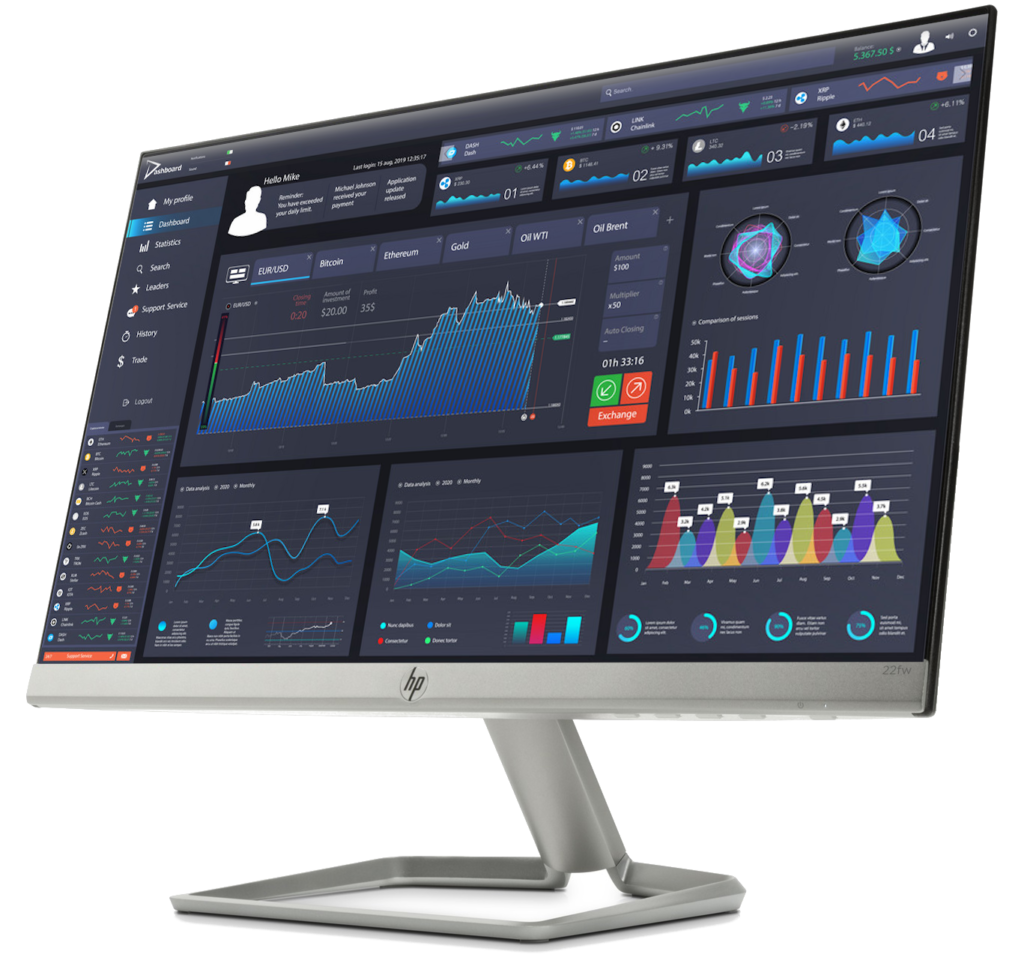
Source and campaign marketing data can be pulled into an internal KPI dashboard or Google Analytics to assess CAC across marketing channels.
The same dashboard can contain additional KPI data points such as MRR, subscribers, free trials, paid members, cancelled members, recent logins, split test data, subscription tier breakdowns and daily/weekly/monthly/annual breakdowns.
Onboarding tips, notifications and emails can educate, entertain and communicate value to new users.
There’s obviously a huge number of companies offering marketing and SaaS specific automation products. At the end of the day you need to access and use your internal data to make it work so a lot of this can be coded straight in to the back end of your software. External API’s can then be used to send emails or notifications for example.
SaaS Marketing Tips
The following tips will go a long way to giving your SaaS business the best chance of success.
Cash Flow Crisis
Cash flow is an inherent problem when scaling up SaaS businesses. Customer acquisition costs are paid up front while revenues come in over a period of one to two years.
There are some tactics to avoid or at least plan for this negative cashflow situation. The most common of which is to offer discounts for annual pre-payment plans. You might have seen some landing pages with a switch tab between pay monthly and pay annually. Annual rates not only lock the customer in for a year but you get the cashflow for that first year upfront which can help a lot with cashflow management.

Always plan ahead and have a working cashflow forecast. This doesn’t have to be perfect or audited by an accountant. You should know your customer acquisition costs, the average monthly revenue and how long it takes to break even. From that you should be able to use your sales targets to create cashflow forecasts.
If you are going to reach a bottleneck with cashflow it’s best to know as soon as possible. SaaS companies are popular with angel and VC investors but it’s still going to take some time to close a round and get access to the funds. As soon as you have product/market fit and have identified the cashflow required start speaking to investors.
Manage Time Effectively
Time management is critical in any demanding job role but working in a SaaS or startup can be particularly challenging. You’ll likely need to fulfill many roles and have to prioritize what is important to complete first.
Things like social media management can take a lot of time for little reward but it makes founders feel busy. Repurposing content is a quick win that is low hanging fruit for busy founders. A single blog article and video can be cut down to a linkedin article, a quote can be turned into a meme for Twitter, a talking head video can be turned into a podcast by extracting the audio. This means you can condense all the content creation challenges down to a single task and create great content without it taking up all your time.
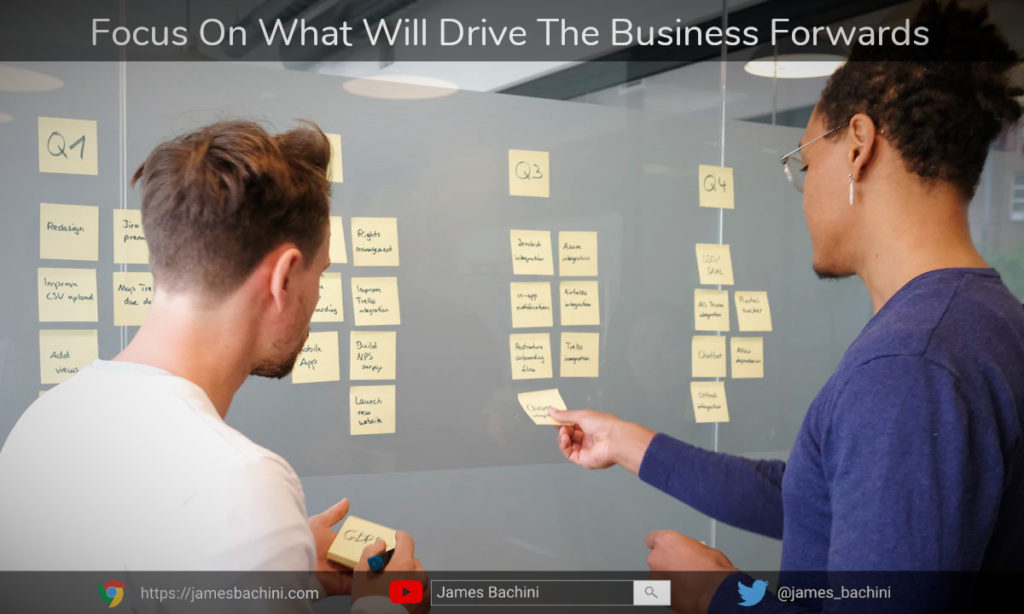
Customer support is a huge challenge for most SaaS platforms. Ideally you want to automate as much as possible and help your users find the answers for themselves. Every query you do answer should be put into a support center (posh for FAQ). Virtual assistants can be hired when support starts taking more than one or two hours per day. Chatbots are getting smarter and can be linked to a support center knowledge database to help users find answers.
Having said all this make sure that you aren’t going overboard from the start. You don’t need an AI chatbot if you have less than a 100 users. The feedback you’ll be getting from those customers will be valuable to begin with and the time required to do things right wont provide good time payback until the platform scales.
Automate only what makes sense at the time and provides economic and time benefits to the business in the near term.
For B2B sales and enterprise clients it’s completely acceptable to charge for training and support. Many open-source projects do this where the software is completely free to use but businesses can hire consultants to train their employees and provide help with integrations etc.
Start With The Funnel
Most SaaS businesses fail for one simple reason. They built something noone wants. The founders spend huge amounts of time developing impressive platforms and constantly building out new features but noone uses it.
Finding customers is the biggest challenge for any SaaS business and it’s where you should start. If the business isn’t viable and there’s no product market fit then it will fail and it’s best to fail fast. The book “The Lean Startup” is well worth a read for anyone falling into this trap.
Ideally you want customers before you have a product. Go out to speak to people and get some commitments or at least gauge interest. Designing and writing code is easy for developers and within the comfort zone but it’ll be wasted time if you are building something no one wants.
I would recommend launch as soon as you have an MVP or even just throwing up a landing page and seeing how much it costs to get an email sign up. It will take less than a day to put together a landing page with an email capture form and a “thanks for signing up we will notify you when ready to launch” page on submit. Throw a couple of hundred dollars worth of Google or Facebook Ads traffic at it and you might save yourself months of development work.
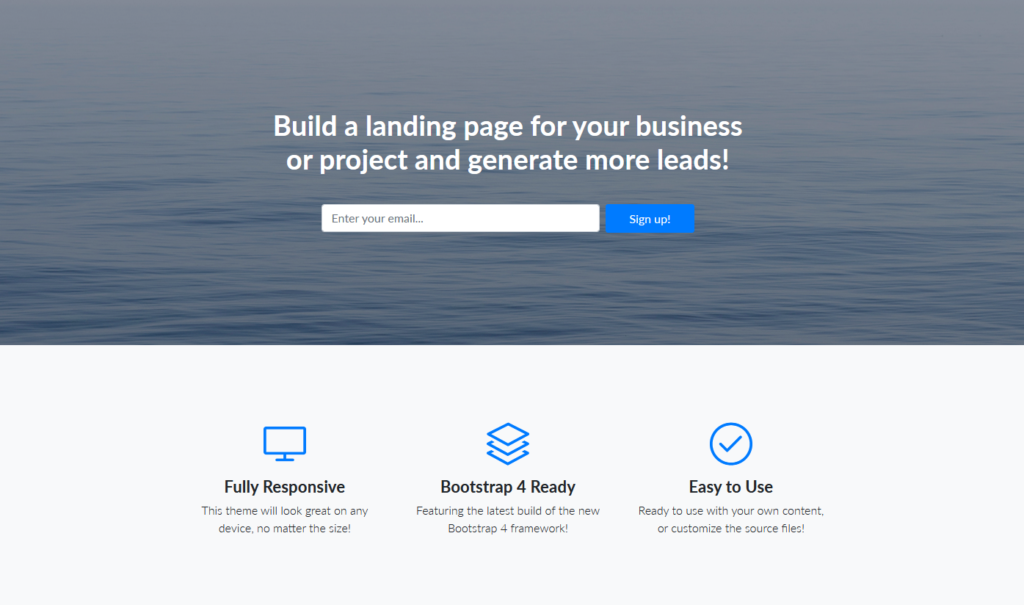
Doing a pre-launch or MVP launch will give you some idea of your customer acquisition costs and give you a gauge of demand. If you can only generate 3 clicks from Google in 24 hours then how will you promote it when it’s fully built?
Once you have customer or signups you can contact them for feedback and ask them what they really want for this software to fulfill their needs.
First 100 Customers
Once you’ve proven there’s real demand for the SaaS then it’s time to start building. Get it built quick and keep features to a minimum to start with. Plan for the software to be scaled but don’t build it out to be the next Facebook. You’ll want to refactor a few times before the code is ready for a million users so just get it up and running and delivering your core value proposition.
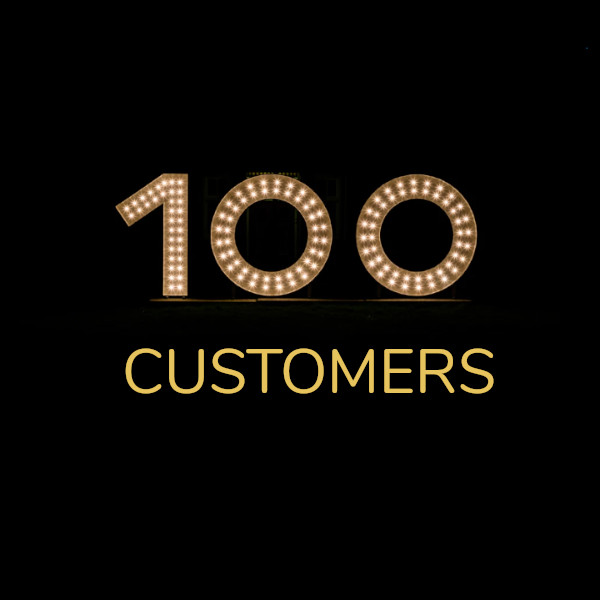
Once it’s built you need to go out and get the first 100 users. This is the hustle stage and a growth hacking mentality will be useful. Paid ads should start to bring in a few users and that traffic and funnel should be optimized.
Contact influencers and affiliate in the niche. Offer them free access to the software. Don’t ask for free promotions but show respect for them as industry peers and ask for some feedback. If people like your software and it helps them then they’ll automatically talk about and be a genuine promoter. If you have budget available then providing some form of financial benefit might help get a foot in the door.
Have a great landing page and split test it from the start. Those first one hundred customers will provide enough data to choose between two completely different landers for paid traffic. It’s better to start with testing completely different pages rather than MV testing individual button colors and headlines a the start.
On the landing page clearly communicate what your software does for the customer. How will it solve their problem. Keep it simple and sell benefits not features.
Test different funnels, try different pre-landing pages or jump pages. Ask a customer to write a 3rd party honest review and try running traffic to that page. Could you write a book or report and promote that to educate new users on the benefits of the product. Russel Brunson does this well with his book Dot Com Secrets which includes a section promoting his Clickfunnels SaaS.
There’s a compounding effect of getting the marketing right at an early stage. Having lower customer acquisition costs will free up cashflow and increase revenues in the short-term. This in turn will allow you to have more left over cash to grow faster with better metrics moving forwards.
Viral Coefficient
Once the SaaS has a hundred users you should start getting to a point where things become streamlined and smoother. The hustle stage is over and it’s time to slide into the growth stage.
Having a viral coefficient will be hugely beneficial to hitting growth targets. A viral coefficient measures the amount of users a single user will refer on average. So if one in ten users refer a friend the viral coefficient is 0.1, if every user refers two friends the coefficient is 2 and the business will scale rapidly.

There’s some things that can help make any SaaS more viral. The most obvious one is having easily accessible share links. Make it as easy as possible for your users to refer friends and colleagues.
An affiliate program is quite easy to setup and you can provide a revenue sharing deal for each user by having a page in their dashboard devoted to referrals.
This is quite easy to setup in house just add a GET variable to any link on the site and include some Javascript code in a template file to write this to localStorage. This can be checked for and sent across on registration where it can be stored as a “referredBy” variable in the main user table.
Example Code
billing.affiliatePayment = (email,commission) => {
const ts = new Date().getTime();
users[email].balance += commission;
mail.sendEmail = (email,'Referral Payment',confirmation);
users[email].account[`AFF-${ts}`] = {
action: 'AFFILIATE PAYMENT',
usdValue: commission,
balance: users[email].balance,
ts
};
}
if (newPayment && users[email].referredBy) {
// 50% commission
billing.affiliatePayment(users[email].referredBy,newPayment * 0.5);
}A simple dashboard with the affiliate link, terms and daily, weekly, monthly referrals alongside payouts to their account gives affiliates everything they need.
The benefit of this is that it makes every user a potential sales person. You can also advertise for affiliates and direct them to the SaaS platform to carry out promotions. Just having an affiliates link on the footer will gain some attention as all affiliates know where to find that.
Speak To Customers
This is critical as it will give developers insights into what real users want. What makes perfect sense to a dev might not be as easy to understand for someone that doesn’t write code and hasn’t devoted their life to this for the last six months.
Customer communications can be set up in a number of ways. You can go through the contacts list and email them, connect on social media or send a platform message. It’s hard to do this well without it seeming automated because users are so used to autoresponder series.
If you have contact details for either a phone or chat system like Telegram or Skype this might be a good way to reach out and ask for feedback. Remember timezones and don’t call people in the middle of the night.
You can make the most useful users “product ambassadors” and send them some swag for helping provide direction on where the platform should be heading. People love feeling important and their opinions valued.
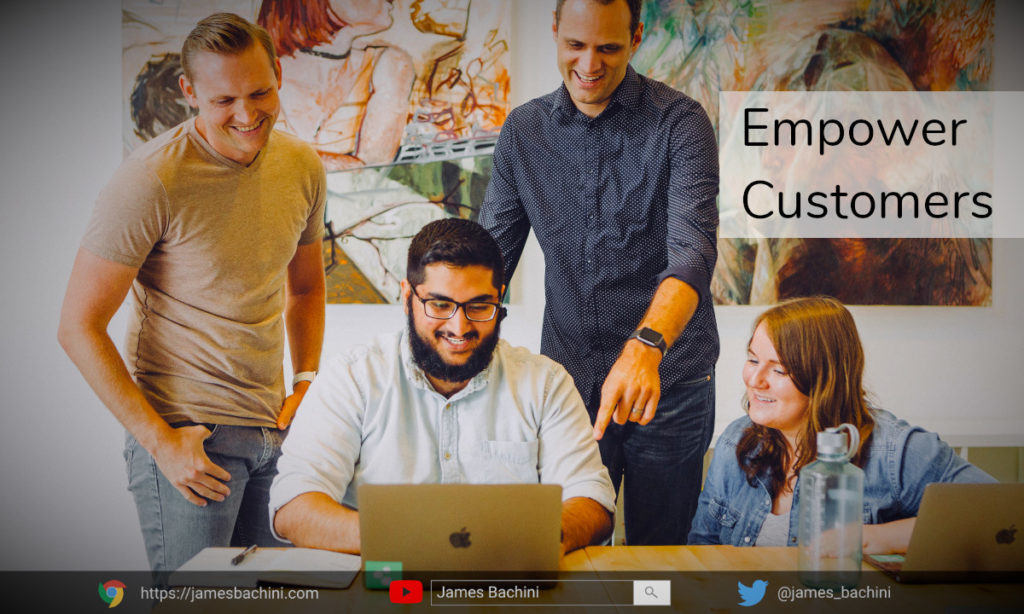
A follow up email after a support query is another good way to solicit feedback. Once their query is solved before closing the ticket ask if there’s anything else and if they have any feedback on things that you could do better.
Building a SaaS platform isn’t easy but doing it blind is near impossible. Open your ears up to what your customers want and build only the things that they need.
I hope you’ve enjoyed this article and found it to be a valuable resource. The fundamental message is to focus on marketing before and during the build. SaaS is a great business model but it has it’s challenges. Good luck!
There’s more articles where you can learn about digital marketing here:
https://jamesbachini.com/learn/
If you’ve enjoyed these resources could you help share this content on social media and send it to anyone who you think might benefit from it.
Thank you.


